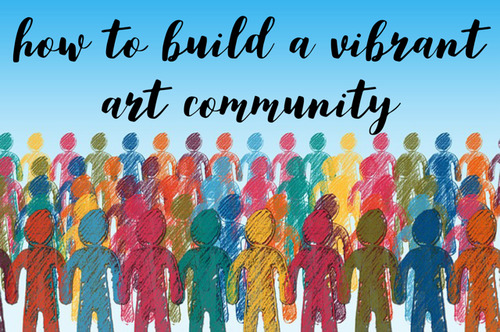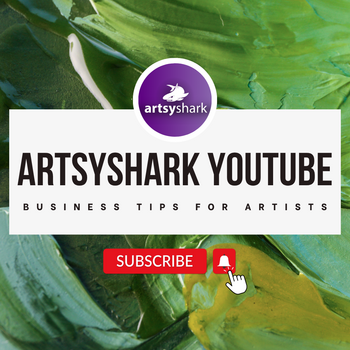by Carolyn Edlund
Artists who work in isolation don’t thrive as much as artists with a supportive community. Here are the benefits.

Art communities come in different forms, ranging from studio/living complexes developed through creative placemaking, to in-person artist salons, to online platforms that bring hundreds or thousands of people together.
What do art communities offer artists?
There are plenty of advantages. Communities engage members who are serious, with common interests and similar goals. There is widespread moral support and encouragement. Discussions ensue, offering answers, feedback and critiques. Opportunities may be offered and collaborations started. Other artists in the group may act as accountability partners or even mentors, and often become friends.
Mitch Bowler is the founder of Pencil Kings, a website designed for aspiring artists to build their skills and engage in a community of like-minded people from around the world. I asked him to share some insights on how to successfully grow a group like this.
Bowler started working with online communities 24 years ago during the early age of the internet and has extensive experience with different groups. The online community at Pencil Kings is private, and run by a manager who directs members to resources, makes recommendations, and keeps things flowing, somewhat like a librarian.
Facilitate engagement
“Facebook will always naturally be the biggest discussion platform,” Bowler says. “People are used to it and tend to gravitate to social media platforms. At first, people in an online art community might not participate. I’d say that 10% are posting, and 90% are lurking. They may lack confidence because they haven’t gotten a formal introduction into the community, or they might not understand how to post or interact.”
What is the most important thing a manager can do? “Getting people to speak, interact and connect is the key. Once that happens the network can grow exponentially,” he responds.
Bowler recalls a conversation with a strong online community organizer who focused on building connections between members. “If someone had a question, instead of answering it, he would recommend they talk to another community member who had just dealt with that problem themselves and could explain how they got past it,” he says. “Even though he knew the answer, what he did was form a bond between two people who formerly had no bond. He knew that the more connections he could create, the stronger the network would be, and that this would grow a really thriving community. And it did. I think the organizer’s job is to form these connections.”
Build structure and diversity
The Pencil Kings community is diverse and includes people from all skill sets and disciplines. “We opened it up to anybody, although we focus on digital and dry media, like pencils and pastels,” says Bowler. “They help each other out, and post what they are interested in. It’s free flowing and organic.”
Planned activities in the community create a structure that facilitates conversations. Members can post their artwork or visit the watercooler area for general topics. There is also a discussion group specifically for critiques. Members are encouraged to share their sketchbooks and participate in themed monthly challenges.
Bowler explains, “We organize people with monthly challenges that focus on core fundamental skills. Each month is a different challenge, developed with the thought that people are there to improve their art. There are exercises, and we share resources. You can see everyone’s work as it progresses, which is really cool. Some people compare themselves to see how they are doing, while others just share. But, members can see that they are not the only one doing the exercise. The proof is that other people are posting.”
Prizes are given out for Pencil King monthly challenges, but they don’t encourage artists to compete with each other. “As far as being on a quest to be the best, I’ve seen that 80% of artists are not in competition with others. They want to make their own art, and let others make their art,” he explains. “The other 20% feel they are in competition with the world and want to be the best. I feel this is not the best way to approach art, especially with beginners. The biggest hurdle I see with artists is that they are just not putting in enough time. So that’s what we reward in the challenges. Everyone who completes the challenge is put into a draw for the prize. We give away art supplies, books or courses related to the challenge. Everyone is eligible to win, but they must take action. From my standpoint as an educator, competition is not the enemy. Inaction is the enemy.”
Taking it live
Online communities can help form strong relationships, but in-person meetings can enhance them. There is no substitute for face-to-face interaction, where the virtual comes to life through a handshake or hug, conversation, and bonding. Live events can be a perfect complement to an online presence as a networking tool and a way to cement friendships.
Bowler recalls being the art director for an online video game league that hosted a live event. He says, “When I finally met some of the people from that community in person, it was amazing. Everyone referred to me by my community ‘gamertag’. I’ve had that experience again and again, when you have a relationship online and then be able bridge that, is where things get taken to a whole new level. That is the power of live. You can foster relationships in the online world, and strengthen them through live events. It can be worth it to people will drive three or four hours just to attend a live event and to experience that.”


Speak Your Mind